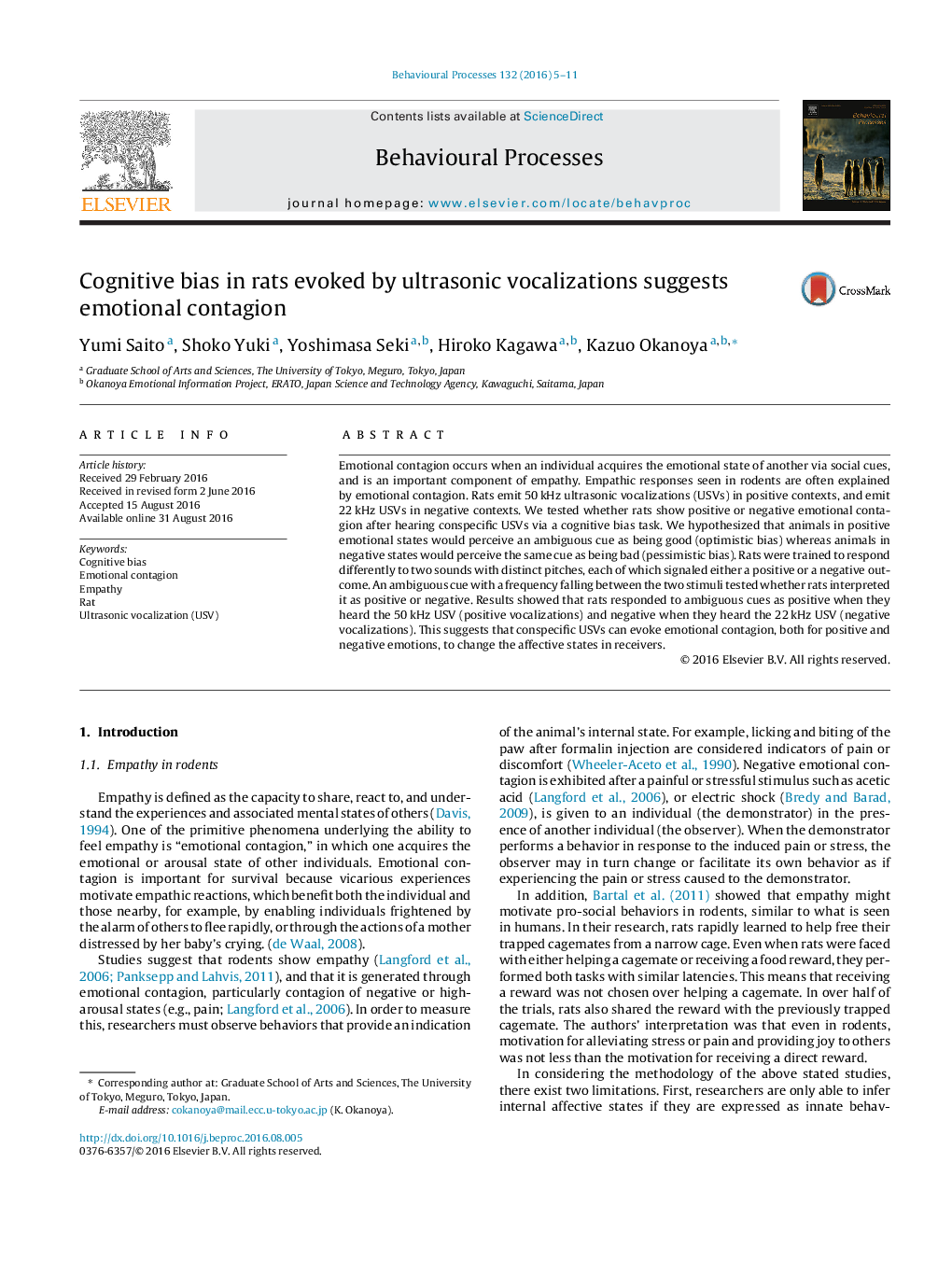| کد مقاله | کد نشریه | سال انتشار | مقاله انگلیسی | نسخه تمام متن |
|---|---|---|---|---|
| 2426359 | 1553148 | 2016 | 7 صفحه PDF | دانلود رایگان |
• Rats showed positive emotional contagion after hearing 50 kHz USVs of conspecifics.
• Conversely, they showed negative emotional contagion after hearing 22 kHz USVs.
• Affective states were measured by a cognitive bias task via operant conditioning.
Emotional contagion occurs when an individual acquires the emotional state of another via social cues, and is an important component of empathy. Empathic responses seen in rodents are often explained by emotional contagion. Rats emit 50 kHz ultrasonic vocalizations (USVs) in positive contexts, and emit 22 kHz USVs in negative contexts. We tested whether rats show positive or negative emotional contagion after hearing conspecific USVs via a cognitive bias task. We hypothesized that animals in positive emotional states would perceive an ambiguous cue as being good (optimistic bias) whereas animals in negative states would perceive the same cue as being bad (pessimistic bias). Rats were trained to respond differently to two sounds with distinct pitches, each of which signaled either a positive or a negative outcome. An ambiguous cue with a frequency falling between the two stimuli tested whether rats interpreted it as positive or negative. Results showed that rats responded to ambiguous cues as positive when they heard the 50 kHz USV (positive vocalizations) and negative when they heard the 22 kHz USV (negative vocalizations). This suggests that conspecific USVs can evoke emotional contagion, both for positive and negative emotions, to change the affective states in receivers.
Journal: Behavioural Processes - Volume 132, November 2016, Pages 5–11
